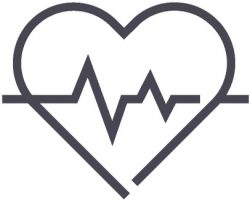Am I at risk for a heart attack or stroke? What is the best home blood pressure monitor? How do I take my blood pressure?
High Diastolic Blood Pressure
When you have your blood pressure checked you will be given a two-number reading. The systolic pressure is the maximum pressure the heart will produce while it is beating. When looking at the reading this will be the number that is on top. The bottom number is the diastolic pressure, which is the amount of pressure on the arteries between heartbeats. The safe range is a systolic pressure of less than 120 and a diastolic pressure of less than 80.
The difference between the systolic and the diastolic blood pressure is known as the pulse pressure. If an adult has a reading of more than 60 they are at risk for a heart attack or other disease.
Blood Pressure and Age
As you age, you will notice some changes in your blood pressure. The systolic pressure will increase with age while the diastolic pressure will generally stay stable. If the systolic number increases from a normal reading, you may have isolated systolic hypertension. This is where the systolic blood pressure has elevated while the diastolic blood pressure remains unchanged. Research as to why blood pressure changes with age is still being conducted but as you get older you can expect to see an increase in your blood pressure.
Causes of High Blood Pressure
In addition to age, several factors can lead to high blood pressure. These factors include but are not limited to:
- Smoking
- Being overweight
- Sedentary lifestyle
- Diet high in salt
- Daily alcohol consumption
- Stress
- Genetics/family history
- Other health conditions such as a thyroid disorder
- Sleep apnea
- Poor eating habits
Symptoms of High Blood Pressure
High blood pressure does not just happen overnight. There are some symptoms that you need to be aware of. If you are experiencing these symptoms you should see a doctor right away for treatment.
Some common symptoms of high blood pressure include:
- Painful or frequent headaches
- Fatigue
- Vision problems
- Chest pain
- Trouble breathing
- Irregular heartbeat
- Blood in the urine
- Pounding sensation in the chest
If you experience any of the above you should see your doctor. You may need to take immediate action to avoid having a heart attack or a stroke. If you ignore these signs and you do have high blood pressure, you can be at risk for developing vision problems, heart disease, kidney failure, or having a stroke or a heart attack.
Risk of High Blood Pressure Numbers
When you have your blood pressure checked, there are some numbers that you should be aware of.
Elevated
If you have a systolic rate of 120-129 and a diastolic rate of less than 80, you are at risk for developing high blood pressure and should take steps to reduce your blood pressure.
High Blood Pressure Stage 1
This is when your systolic rate is 130-139 and your diastolic rate is 80-89. Your doctor will recommend lifestyle changes and perhaps medication.
High Blood Pressure Stage 2
The systolic rate will be greater than 140 and the diastolic rate will be greater than 90. This is when you are at risk for serious health conditions.
Crisis
You should contact your doctor immediately if your systolic rate is greater than 180 or your diastolic rate is higher than 120.
Treatment
If you have high blood pressure your doctor can prescribe medication such as beta-blockers to help lower your blood pressure. You should make some lifestyle changes too, such as a diet lower in fat and cholesterol, exercise, reducing salt intake and limiting alcohol consumption. These small changes can help you lower your blood pressure.
High blood pressure is a silent killer. You should take your blood pressure reading on a regular basis and make some healthy lifestyle changes to help keep your blood pressure within the normal range.
